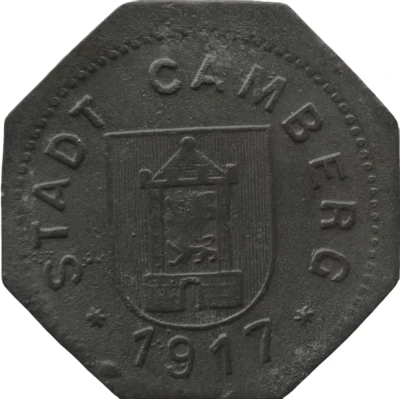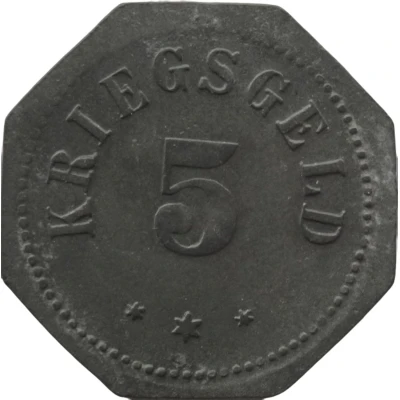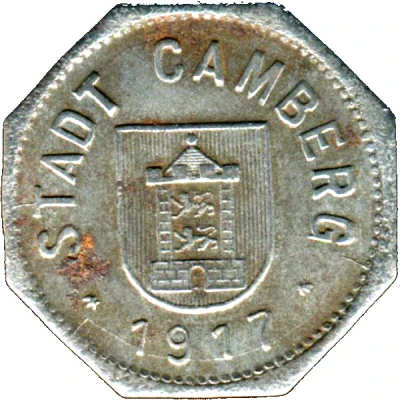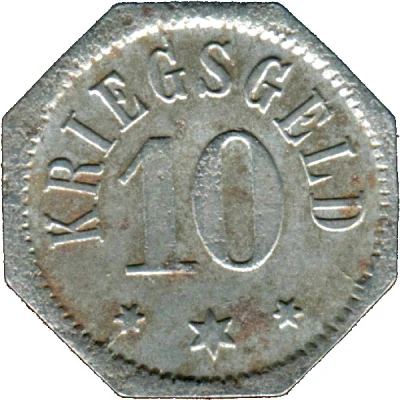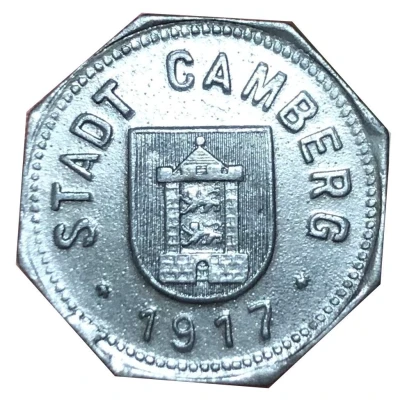
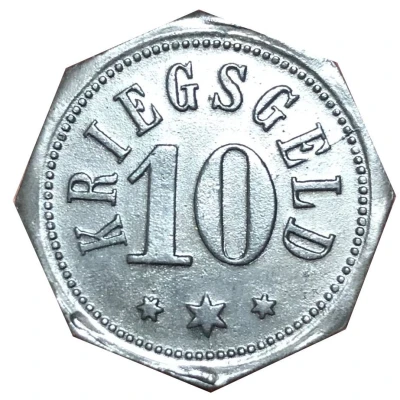

© Rhonan (CC BY-NC-SA)
10 Pfennigs - Camberg
1917 year| Zinc | 2.39 g | 21.0 mm |
| Issuer | City of Camberg (Prussian province of Hesse-Nassau) |
|---|---|
| Emperor | William II (Wilhelm II) (1888-1918) |
| Type | Standard circulation coin |
| Year | 1917 |
| Value | 10 Pfennigs (10 Pfennige) (0.10) |
| Currency | Mark (1914-1924) |
| Composition | Zinc |
| Weight | 2.39 g |
| Diameter | 21.0 mm |
| Thickness | 1.17 mm |
| Shape | Octagonal (8-sided) |
| Technique | Milled |
| Orientation | Medal alignment ↑↑ |
| Demonetized | Yes |
| Updated | 2024-10-04 |
| Numista | N#36514 |
|---|---|
| Rarity index | 53% |
Reverse
Pearl rim, legend surrounding denomination centered
Script: Latin
Lettering:
KRIEGSGELD
10
✶ ✶ ✶
Edge
Plain
Comment
Issuing authority: [Stadt, Hessen-Nassau]Die rotation variants exists
Interesting fact
The 10 Pfennigs coin from Camberg (Prussian province of Hesse-Nassau) made of Zinc weighing 2.39 g is interesting because it was produced during a time of war, specifically during World War I, and its design reflects this historical context. The coin features a unique wartime design, with a soldier's helmet and an eagle on the obverse, and a simple numerical design on the reverse. This design was used for coins produced during the war years, and it was meant to convey a sense of patriotism and support for the war effort. Additionally, the use of zinc as the material for the coin was also a result of the war, as other metals like copper and nickel were in short supply due to the war effort.
Price
| Date | Mintage | VG | F | VF | XF | AU | UNC |
|---|---|---|---|---|---|---|---|
| 1917 | - | - | - | - | - | - |
Values in the table are based on evaluations by sales realized on Internet platforms. They serve as an indication only for 10 Pfennigs - Camberg 1917 coin.
